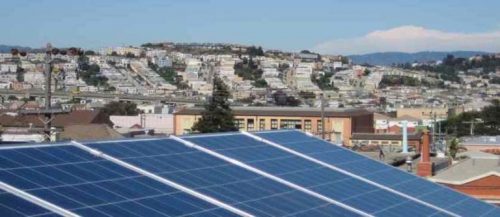
The debate over NEM 2.0 continues in California
The NEM successor tariff will go into effect by July 1, 2017, or after a utility reaches the existing NEM program cap.
The California Public Utilities Commission (CPUC) proceeding on the development of a net energy metering (NEM) successor tariff for eligible customer-generators continues to spur debate among a number of stakeholders, including the Clean Coalition, which has been heavily involved in the process.
The existing NEM tariff allows customers who install small, on-site renewable generators to receive bill credits, at the retail rate, for power delivered to the grid. California law requires the CPUC to adopt a successor tariff or standard contract by the end of this year in order to allow new participants to join when the existing program expires. The NEM successor tariff will go into effect by July 1, 2017, or after a utility reaches the existing NEM program cap, which is 5% of aggregate customer peak demand.
On September 1, the Clean Coalitionsubmitted commentsreaffirming several key elements of the NEM successor tariff or standard contract. These include: retaining the ability for behind-the-meter self-generation; initiating a process to properly value distributed generation; ensuring NEM participants are not subject to fixed charges; and streamlining interconnection processes.
We suggested that the CPUC evolve NEM to encompass the key principles of self-generation and a feed-in tariff. Under this hybrid approach, future NEM participants will:
- Meet on-site load with instantaneous on-site generation;
- Export excess electricity to the local distribution grid and be credited at a feed-in tariff rate; and
- Continue to buy all additional electricity, as necessary, from the local utility at the retail rate.
Opening up a proceeding to properly value distributed generation, as a value-of-solar tariff does for solar, would establish appropriate compensation for exported electricity. California is currently not engaged in such a determination, but the Clean Coalition believes it should be. Specifically, the CPUC should comprehensively value local generation–with consideration of locational benefits, such as avoided transmission and distribution (T&D) costs, as well as societal benefits.
With respect to interconnection of NEM systems, the three major California investor-owned utilities have proposed to impose a fixed charge on NEM participants. If the successor tariff follows our recommendations, these types of charges will never take effect. We believe a fixed charge for interconnection of NEM systems is misguided because NEM participants should not be penalized for self-generating and should only be responsible for the actual costs they impose on the grid. The Clean Coalition, in a separate proceeding, is calling for streamlined interconnecting processes that improve cost certainty and transparency in bringing local renewables online.
Numerous stakeholders and contentious issues in the NEM 2.0 proceeding make it difficult to predict how the next few months will play out. Nevertheless, the Clean Coalition will continue to push for an objective successor policy that establishes a sustainable, robust market for customer-owned, local renewable energy throughout California.

